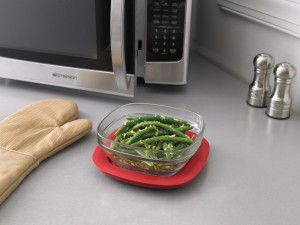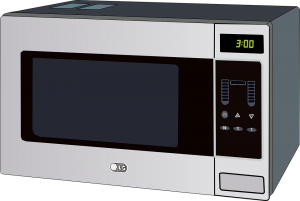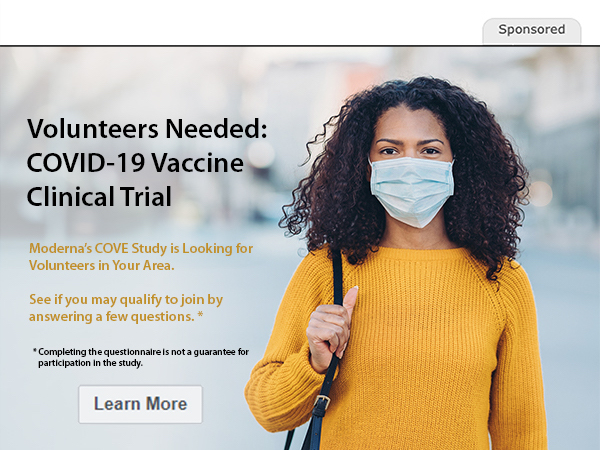If you feel “crummy in the tummy,” you may assume you have a 24-hour stomach bug. Staying by the bathroom and “living through it” may be okay for most people, but it’s not that simple for people with chronic conditions. Vigilance with hand washing should be part of your routine but you can also be alert to a preventable source of illness–contaminated food.
Bacteria and Viruses in Food
 Around 1 in 6 people get sick from food poisoning in the U.S. each year. Since people don’t usually report “stomach bugs” to departments of public health, this figure underestimates the problem. The most common culprits are E. coli, Salmonella (two bacteria), and Norovirus (virus). At least 9,000 deaths and $4 to $6 billion in medical costs result from foodborne illness. Of these, Norovirus is estimated to cause 21 million illnesses and 800 deaths.
Around 1 in 6 people get sick from food poisoning in the U.S. each year. Since people don’t usually report “stomach bugs” to departments of public health, this figure underestimates the problem. The most common culprits are E. coli, Salmonella (two bacteria), and Norovirus (virus). At least 9,000 deaths and $4 to $6 billion in medical costs result from foodborne illness. Of these, Norovirus is estimated to cause 21 million illnesses and 800 deaths.
The FDA is one of the governmental organizations in charge of food safety. But we didn’t always have this protection.
The Jungle
Of course, we’ve come a long way since 1904. At that time, a young novelist, Upton Sinclair, interviewed and observed the poor conditions in the meat-packing industry. The Jungle, is a fictionalized version of what Sinclair saw and experienced, exposing the filthy and unsanitary conditions in the meat packing plants. Among other horrors, workers with tuberculosis spit up blood and coughed on meat that was sold throughout the US. The book helped to spur the passing of the Pure Food and Drugs Act of 1906, establishing standards for food safety.
Even so, today we read news stories of popular restaurant chains being the source of food poisoning. What should you do to stay safe?
What Should You Look For At A Restaurant?
- Check out the bathroom. If the bathroom does not have soap and instructions on proper hand washing, you might want to go
 elsewhere.
elsewhere. - Are the servers or other employees coughing, sneezing or do they look sick? Many people go to work when they are ill because they have to work; but that doesn’t mean you have to eat where they work.
- Are the garbage cans overflowing? Are the tables dirty? Art the utensils clean? These are signs of poor management and may indicate that the kitchen is just as dirty.
- Look for the inspection rating. It should be prominently displayed. An A rating isn’t a guarantee that you are safe but any lower rating means turn around and leave the restaurant.
- Has the food been sitting out under lamps for extended periods of time? Buffet style food should be fresh.
After checking out the restaurant scene, you may decide to eat at home. What can you do to help keep you safe when eating in?
At Home: Your Microwave and Food Safety
Your microwave can be a tool to reduce food-related illnesses. To use this tool as a means to make food consumption safer, common myths associated with microwave use must be dispelled.
Myth Number One
Microwave radiation kills germs so any amount of cooking in a microwave oven kills them.
This myth is probably the number one cause of foodborne illness. The germs that cause food poisoning are killed in the microwave by the heat that is produced, not by radiation. Therefore, the food must be heated to temperatures that will kill bacteria and viruses, much like conventional cooking standards indicate.
Myth Number Two
 The microwave oven cooks food from the inside out.
The microwave oven cooks food from the inside out.
Actually, the microwave cooks food from the outside in. This is why there may be cold or cool places in the food that haven’t cooked or warmed properly. Those cool places are pockets for germs to live.
Myth Number Three
It’s okay to ignore stirring and rotating instructions on labels for microwaveable products.
This is not a good idea. Cooking in a microwave requires these strategies. Moist foods tend to cook faster than dryer foods. Likewise, because microwaves cook from the outside in, the outer layers cook quicker than the inner. Cooking can be uneven.
In 2007 and 2010, the CDC reported multi-state (41) outbreaks of food poisoning by Salmonella caused by not-ready-to-eat frozen pot pies. In both studies, researchers found that a misunderstanding of microwaving instructions and a lack of knowledge about microwaving were related to illness and hospitalization.
Microwaving Safely
One incredibly useful tool in the kitchen is a food thermometer. It can tell the cook when food has been heated or reheated to the  temperature that will kill Salmonella, E. coli and Norovirus. The CDC provides these guidelines: “Use a food thermometer to ensure that foods are cooked to a safe internal temperature: 145°F for whole meats (allowing the meat to rest for 3 minutes before carving or consuming), 160°F for ground meats, and 165°F for all poultry.”
temperature that will kill Salmonella, E. coli and Norovirus. The CDC provides these guidelines: “Use a food thermometer to ensure that foods are cooked to a safe internal temperature: 145°F for whole meats (allowing the meat to rest for 3 minutes before carving or consuming), 160°F for ground meats, and 165°F for all poultry.”
Microwave Your Sponges and Dishcloths
Sponges and dishcloths are vectors of disease. Is this a surprise? Think about it. If you wipe up the drippings from the chicken in the kitchen, then wipe up the milk spilled on the table, even if you rinse the sponge in between, you have likely spread bacteria from the kitchen to the dining room table.
After finishing with washing the dishes or cleaning up the kitchen, the sponges and washcloths are left damp on the counter. This makes them great breeding grounds for germs. Washing them in the dishwasher nightly can help reduce the likelihood of infection, especially if your dishwasher has a sanitizing setting.
Since Norovirus have a “case” surrounding them, these viruses are especially resistant–they may even survive laundering and dishwashing.
Your microwave to the rescue: recent research has found that two minutes in the microwave can kill about 99% of the germs in damp sponges and dishcloths.
The operational word is “damp” because the microwaves heat the water molecules and that is what kills the germs. The most resistant bacterial spores and viruses required 4 minutes in the microwave to be completely inactive. <Warning: Make sure the sponge or dishcloth is wet to reduce fire risk.>
So, even though over 95% of American households own a microwave, we need to bone up on how to use them. If we do, this convenience can help increase food safety.
What do you do to keep food safe?
Please feel free to make suggestions in the comments below. Thank you for sharing what you know with others.







Are there health risks in using a microwave that routinely is used to heat food without a splatter guard? The microwave at work is so splattered at times many of the holes inside are actually plugged. Where does the food go that splatters inside these holes?
Josh
Of course there are health risks. It sounds like nobody cleans that microwave. The food doesn’t go anywhere until someone cleans it. Complain to management. Maybe they’ll dispose of the nasty thing.
.
any tips on how to handle take out food considering the coronavirus outbreak around the world? Would this be good practice considering we dont know who or what the food has been exposed to? thank you!
You bet. As long as you reheat the food to 150F (hot!!!) you’ll microwave those little virus buggers back to China. Hit em with the American molecule shaker!
@ Andrew Scampini. I am wondering the same thing.
Can you kill germ spread by cockroach in food using a microwave?
Yes! Very much! Cockroaches are the Longest survived Insects on earth as, Many do not eat this and hence Bacteria Germs and Pathogens may take shelter on those…